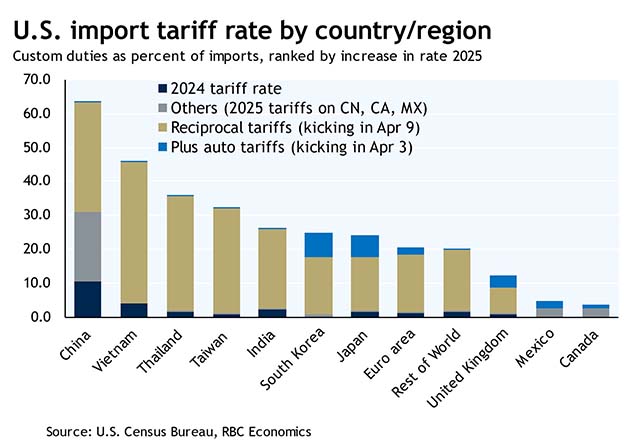Certain goods will not be affected by the reciprocal tariffs due to being covered by other orders or agreements. These include items under 50 USC 1702(b), steel and aluminum articles as well as autos and auto parts already under Section 232 tariffs, and specific articles like copper, pharmaceuticals, semiconductors, and lumber. Additionally, any articles potentially subject to future Section 232 tariffs, bullion, and certain minerals not found in the U.S. are exempt. Currently, Canada and Mexico are not subject to these reciprocal tariffs, as the USMCA remains in place. However, some products not under USMCA will face a 25% tariff, with energy products having a reduced tariff of 10%.
Tariffs will remain in effect until the president determines the threat “is satisfied, resolved, or mitigated.” More specifically the order “contains modification authority, allowing President Trump to increase the tariff if trading partners retaliate or decrease the tariffs if trading partners take significant steps to remedy non-reciprocal trade arrangements and align with the United States on economic and national security matters.”
We continue to rely on our broader tariff playbook to help inform the expected impacts of trade risks that will continue to evolve. Prior tariff announcements have been significantly changed or modified days (or even hours) later and there is a significant possibility that tariffs announced today will look different a week from now.
Broadly speaking, we have argued before that U.S. buyers will have difficulty finding domestically produced alternatives to imports. A wave of retirements and immigration cutbacks limit the amount that U.S. production can increase in the near-term, and capital investments to “reshore'” manufacturing production will take years and billions of dollars to complete.
Given those constraints to U.S. domestic production capacity, at least in the near-term, the impact of tariffs on U.S. growth depends ultimately on whether alternative cheaper import markets exist, and whether the total tariffs imposed are large enough to significantly weaken U.S. economic growth and shrink the size of the total import pie.


